New patterns are constantly emerging in the digital advertising landscape, and one of the latest is the shift from an ‘indirect brand economy’:
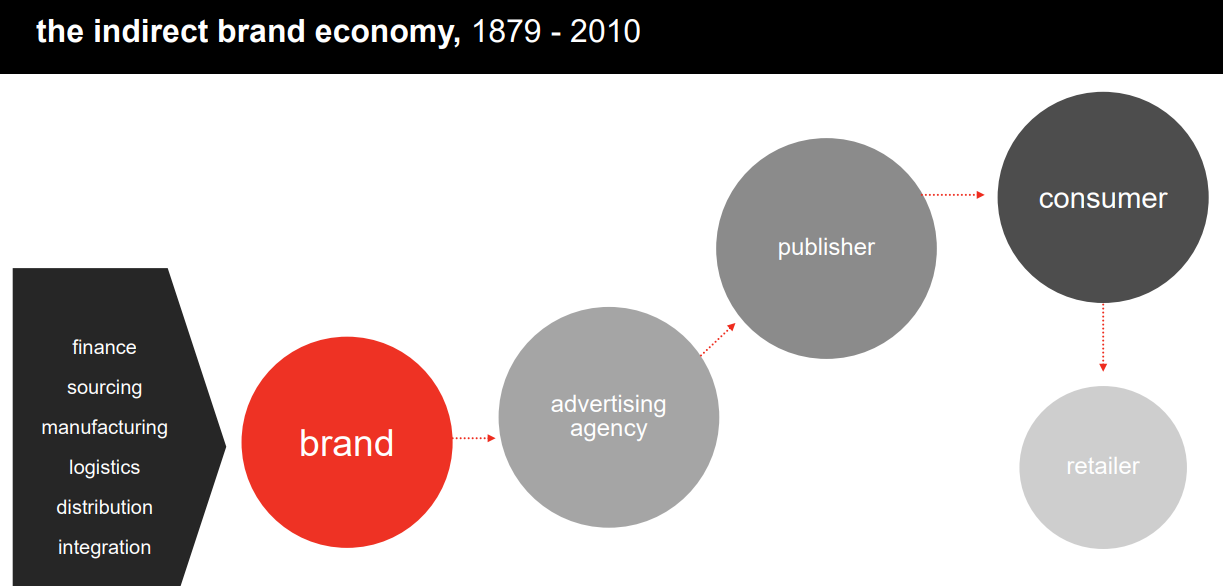
To a ‘direct brand economy’:
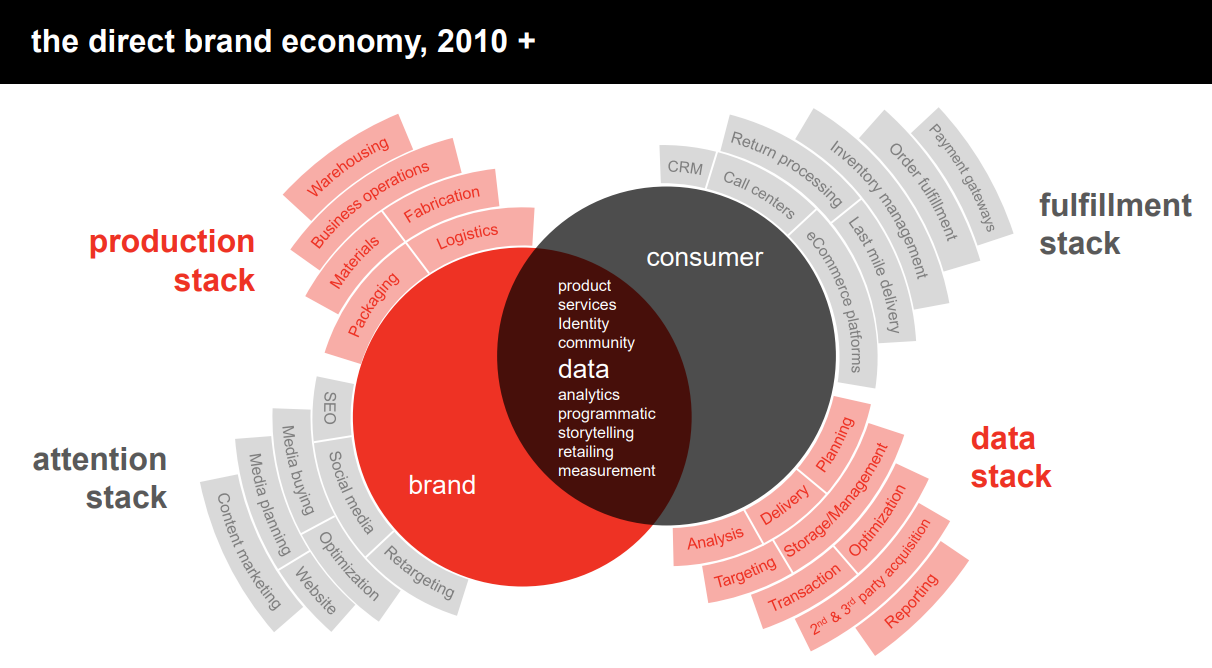
This recent way of doing business — often referred to as a direct to consumer ecommerce business model — allows digital data-fueled brands to provide consumers with exactly what they want, when they want it, in an extremely personalized way. It allows consumers to access products directly from a brand, rather than a third party such as a retail store.
Knowing about the DTC business model, you might be wondering what is direct to consumer advertising exactly?
What is DTC advertising and why are brands using it?
Just as the term and business model suggest, DTC advertising cuts out any middlemen and lets brands to manage the end-to-end process themselves. So rather than pushing products to larger retailers and wholesalers, sellers choose to focus their marketing strategies on consumers to build a closer relationship with them.
DTC marketing is quickly growing in popularity, brought on largely by other current advertising trends, like influencer marketing and social media ecommerce capabilities like various shopping ads.
What sets direct to consumer advertising apart?
While there are some similarities, there are some major differences between DTC marketing and other marketing strategies including B2B and B2B.
The main distinction is that DTC advertising requires an unrelenting focus on data, technology, and a personalized ecommerce experience — more so than any other type of advertising.
Other qualities that set DTC marketing apart include:
- A seamless buying experience with speedy delivery
- Heavy reliance on engagement and sharing (social conversations turn into user-generated content, which can then be leveraged to spread positive publicity)
- One-to-one interaction with users based on customer feedback and reviews
- The quantity and quality of first-party customer data created that the brand can use to make important decisions, such as tweaking product design
- A deep and invaluable understanding of the purchase path, which can inform subsequent communication and advertising choices
- An intrinsic modernness, providing millennials with the sense that these products were developed specifically for and by their generation
How can brands implement a DTC advertising strategy?
There are countless ways to begin DTC advertising, but here are a few of the most basic to get you started.
Paid search
This is the best place to start as a DTC brand because when someone searches for your main keywords, you want to make sure they know that your business can help them. This allows you to start building that strong one-on-one connection with them immediately as they’re searching for a solution, and then convince them to take action.
For example, when someone searches “where to buy razors,” Harry’s ensures their website is at the top of the results page:

When users click the DTC ad, they’re directed to this pre-cart landing page to learn more about the razor subscription:
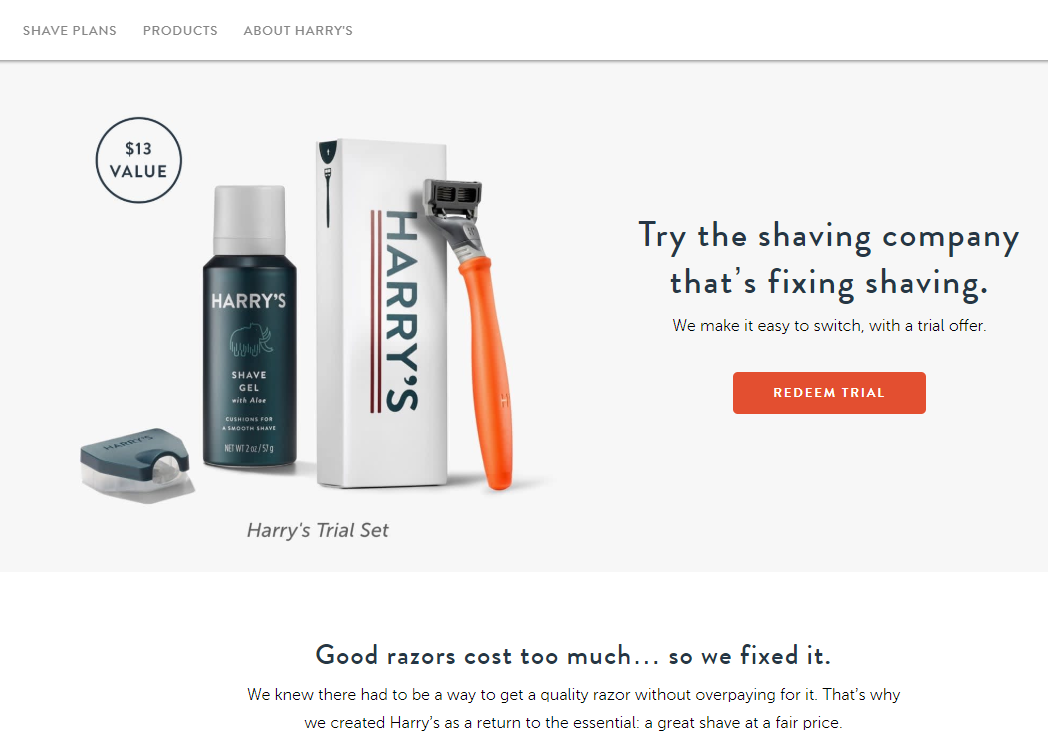
After learning about the offer, prospects can click the “Redeem Trial” CTA button to easily checkout on the next page:
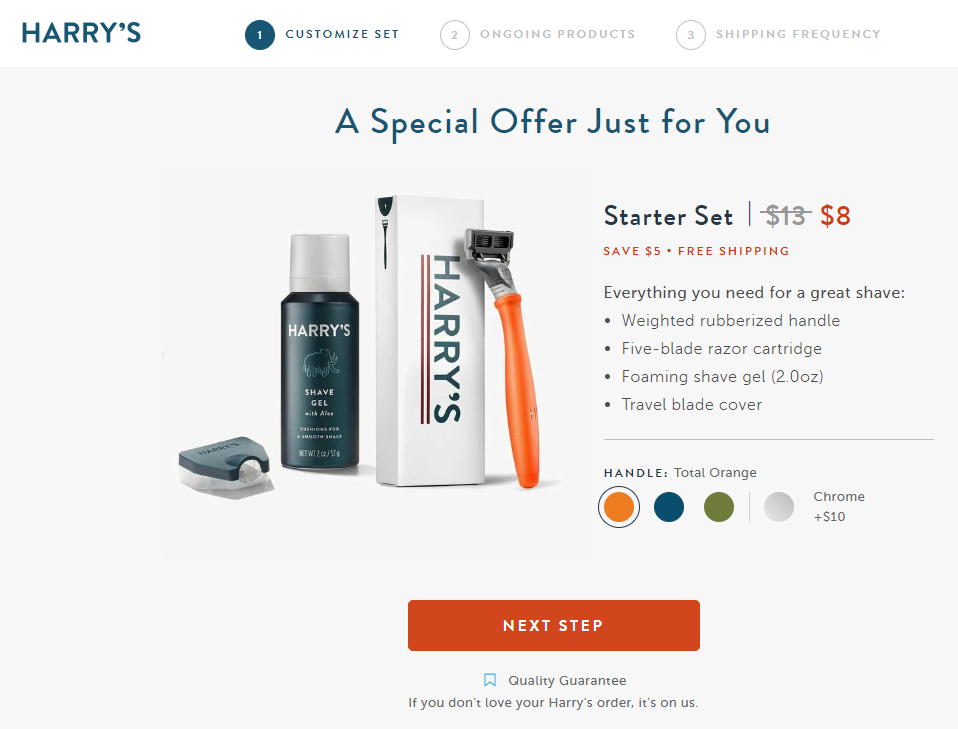
The order of this process is critical because although nearly 1 in 4 online shoppers begin their customer journey on a product page, about 96% of visitors aren’t yet ready to buy when arriving there. Sending them to an actual pre-cart landing page instead makes them less likely to bounce right away.
Social media
Paying for social media ads where your consumers spend most of their time is another great DTC marketing tactic. Social media advertising provides brands with a way to amplify their voice, increase shares and engagement, and leverage personalized, one-to-one messaging.
This DailyLook Facebook DTC ad is highly personalized to the user. The ad copy and video captions even make it clear that DailyLook is a DTC brand:

Visual platforms like Instagram and Pinterest have been rolling out in-feed shopping tools, enabling customers to move more quickly from product discovery to purchase. Users can click ads like this Nike Pinterest ad and be directed to a brand’s ecommerce site to complete transactions:
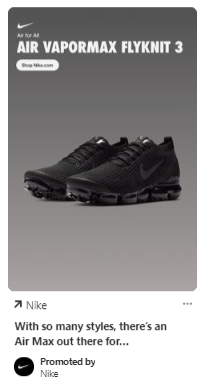
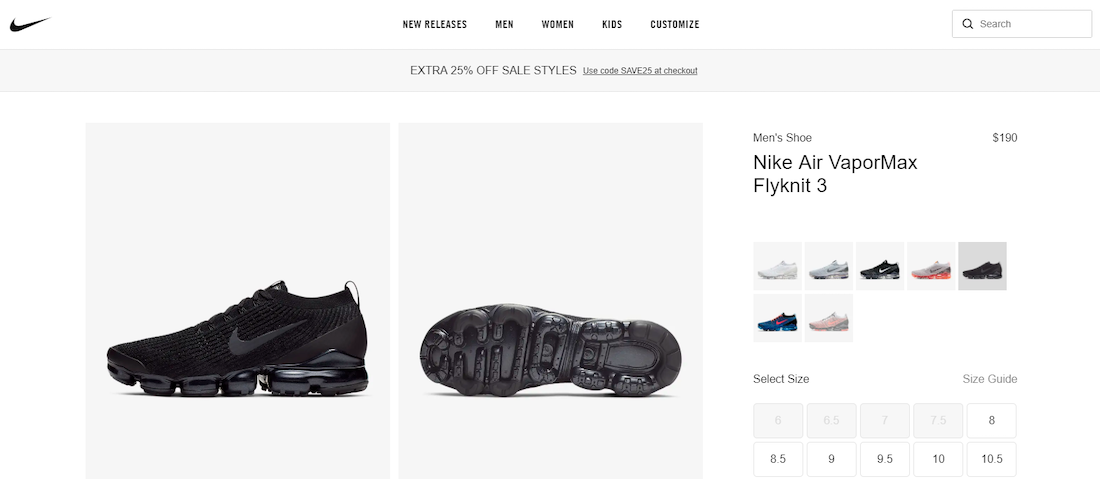
Or they can complete an in-app purchase in some cases, such as Instagram Checkout:

With this new feature, consumers don’t even have to leave Instagram to complete their transaction.
With your existing list of contacts, you can start by setting up one-to-one transactional emails — welcome, thank you, order confirmation, shipping notification, customer support, etc. like this one from Fabletics:
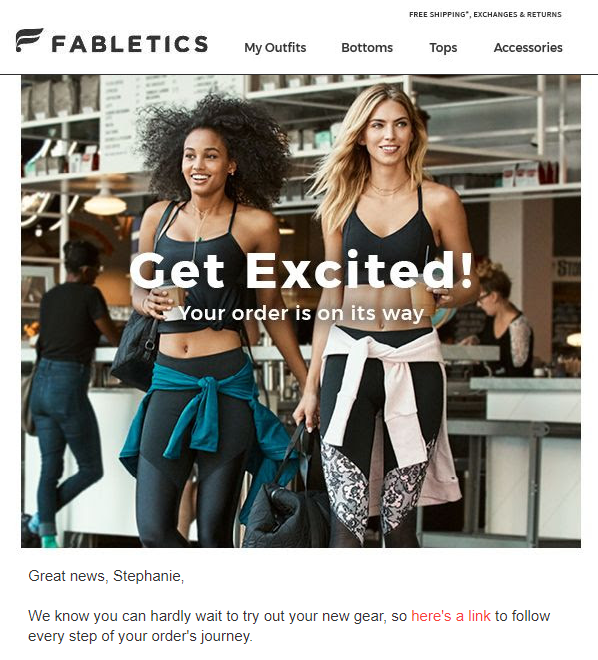
You can also create promotional DTC campaigns like Nectar does with their direct-shipping mattress service:
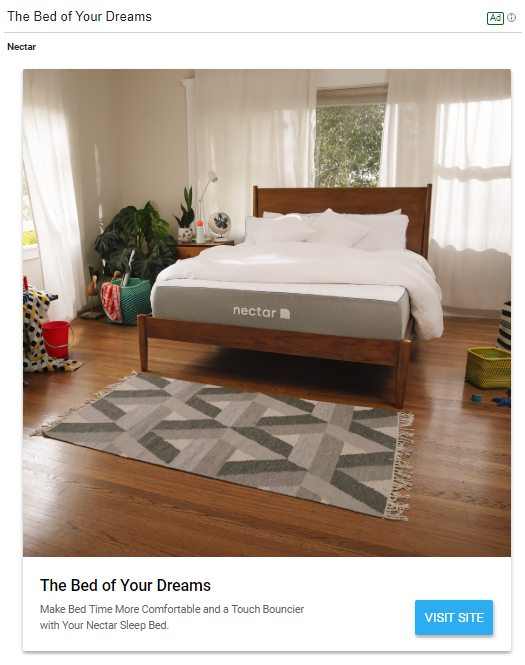
Display ads
Display and retargeting ads tend to have two different goals: not only click-throughs, but also impressions and reach. So this particular DTC marketing tactic is more like brand advertising — to make a favorable impression, build strong connections, and increase long term demand.
Consider this Johnson & Johnson ad for instance:
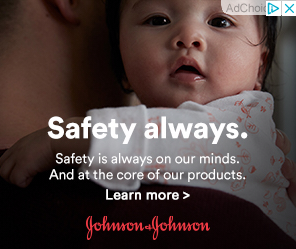
It’s not intended to sell a specific product; just to raise brand awareness, build connections, and create long term demand.
Benefits of DTC advertising
There are several benefits of direct to consumer advertising beyond cutting out middleman costs, increased sales, and brand awareness. With this advertising method, you also get:
1. More control over the customer experience
With ever-changing digital trends and technologies, customer expectations continue to increase. More than ever, they expect a seamless experience.
However, many brands invest tons of resources into production, manufacturing, ecommerce marketing, packaging, etc. — and once their products hit a retail distributor’s shelf, they’ve lost most control over the customer experience. They’re at the mercy of the store at that point, with very little say on how the product is sold or whether or not the customer even leaves the store or site satisfied.
A direct to consumer business model gives brands more control over the experience, and fortunately, DTC advertising is maniacally focused on the customer experience. By selling directly to consumers, brands can envision how their entire customer journey should look and do whatever it takes to make that vision a reality.
Selling and advertising directly to customers doesn’t necessarily translate to better customer experience, though. It just provides the potential. Without the necessary insight and processes in place, a seamless customer experience may not be possible. That’s why a deep understanding of the end consumer is required for an ideal DTC marketing experience.
2. Potential to collect massive amounts of customer data
The U.S. generates an average of 2,657,700 GB of Internet data per minute.
For many brands, the most compelling reason to adopt a DTC model is to collect as much of this customer data as possible. Selling directly to consumers simplifies that because every transaction and interaction is captured directly by the brand. There’s only one store, one CRM, and less chance for information to be lost through the cracks.
Generally, DTC brands have more data on their customers, enabling them to:
- Monitor marketing efforts to ensure a strong return on investment
- Target leads to ensure that time and money aren’t wasted on disinterested consumers
- Maximize cross-selling and upselling marketing activities
- Analyze the customer lifecycle to improve the buyer’s journey
3. Strong relationships with customers
With all of this data, brands can benefit from more than just direct responses and immediate sales. They can also strengthen relationships with consumers, which ultimately leads to more long-term demand.
Surveys indicate that customers prefer purchasing directly from brand and manufacturer websites rather than through resellers, so offering a DTC business model is a great way to improve brand loyalty.
According to Alex Becker, branded manufacturers global VP for Digital River:
If a consumer chooses your product over a competitor’s on a retailer’s website, you might have won a sale -- but you’ve lost the opportunity to build a relationship.
Overall, he says:
A distinctive, compelling and focused public-facing brand experience, complete with direct-to-consumer online sales, lets manufacturers control and cultivate relationships with customers that transcend retail channels.
With all of these advantages, also come a few potential disadvantages:
- Some companies have strong competitors that already dominate direct to consumer ecommerce advertising in their industry.
- When price is the primary driver in an industry, brands could end up competing with powerhouse retailers like Amazon.
- Startups may gain exposure faster by working with a wholesale channel first, and then switching to DTC.
- A robust DTC presence could endanger retail partnerships.
Start advertising directly to your consumers
Whether you’re looking for increased sales, brand awareness, or more valuable consumer relationships, DTC marketing campaigns can help. As with any personalized campaign, develop a clear and simple message, deliver it in a genuine manner, and be sure to reach consumers at their convenience.
To create perfectly-optimized direct to consumer ads — no matter which channel you decide to run campaigns — refer to the Instapage digital advertising reference guide for the most up to date ad specs and targeting options.
